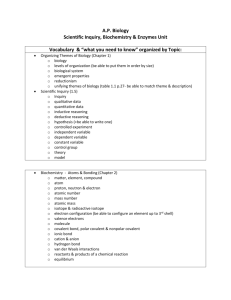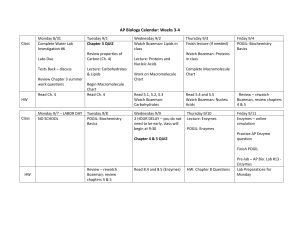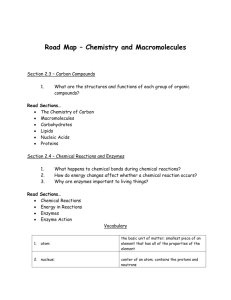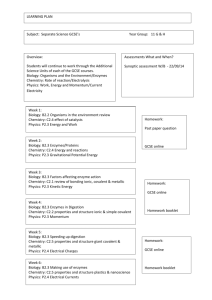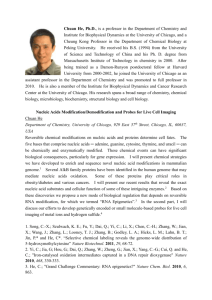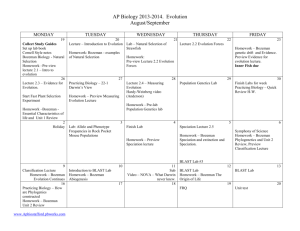Chapter 28: Population Ecology
advertisement
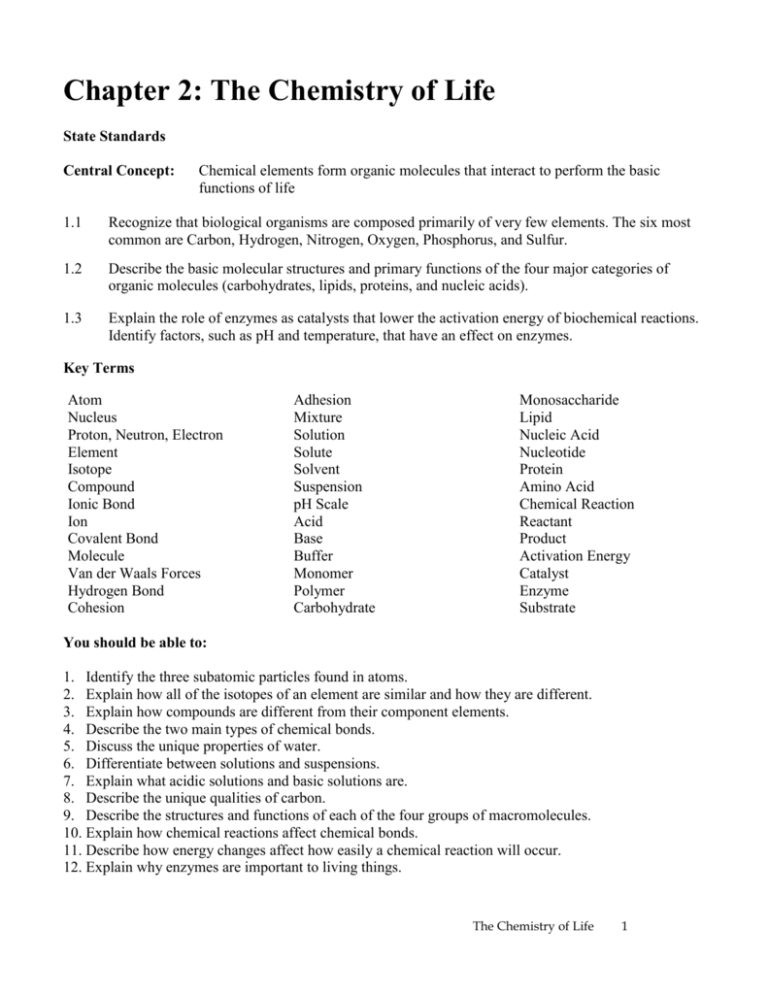
Chapter 2: The Chemistry of Life State Standards Central Concept: Chemical elements form organic molecules that interact to perform the basic functions of life 1.1 Recognize that biological organisms are composed primarily of very few elements. The six most common are Carbon, Hydrogen, Nitrogen, Oxygen, Phosphorus, and Sulfur. 1.2 Describe the basic molecular structures and primary functions of the four major categories of organic molecules (carbohydrates, lipids, proteins, and nucleic acids). 1.3 Explain the role of enzymes as catalysts that lower the activation energy of biochemical reactions. Identify factors, such as pH and temperature, that have an effect on enzymes. Key Terms Atom Nucleus Proton, Neutron, Electron Element Isotope Compound Ionic Bond Ion Covalent Bond Molecule Van der Waals Forces Hydrogen Bond Cohesion Adhesion Mixture Solution Solute Solvent Suspension pH Scale Acid Base Buffer Monomer Polymer Carbohydrate Monosaccharide Lipid Nucleic Acid Nucleotide Protein Amino Acid Chemical Reaction Reactant Product Activation Energy Catalyst Enzyme Substrate You should be able to: 1. Identify the three subatomic particles found in atoms. 2. Explain how all of the isotopes of an element are similar and how they are different. 3. Explain how compounds are different from their component elements. 4. Describe the two main types of chemical bonds. 5. Discuss the unique properties of water. 6. Differentiate between solutions and suspensions. 7. Explain what acidic solutions and basic solutions are. 8. Describe the unique qualities of carbon. 9. Describe the structures and functions of each of the four groups of macromolecules. 10. Explain how chemical reactions affect chemical bonds. 11. Describe how energy changes affect how easily a chemical reaction will occur. 12. Explain why enzymes are important to living things. The Chemistry of Life 1 You should know the difference between: Proton, neutron, and electron Element and isotope Ionic bond and covalent bond Cohesion and adhesion Solution and suspension Acid and base Monomer and polymer Reactant and product Lipid, Carbohydrate, Nucleic Acid, and Protein Chapter 2 Video Review Bozeman Biology – Molecules of Life _________________________________________________________________ _________________________________________________________________ _________________________________________________________________ _________________________________________________________________ _________________________________________________________________ Bozeman Biology – Water and Life ___________________________________________________________________ ___________________________________________________________________ ___________________________________________________________________ ___________________________________________________________________ ___________________________________________________________________ Bozeman Biology – Acids, Bases, and pH _________________________________________________________________ _________________________________________________________________ _________________________________________________________________ _________________________________________________________________ _________________________________________________________________ Bozeman Biology – Enzymes ___________________________________________________________________ ___________________________________________________________________ ___________________________________________________________________ ___________________________________________________________________ ___________________________________________________________________ The Chemistry of Life 2 The Chemistry of Life 3

